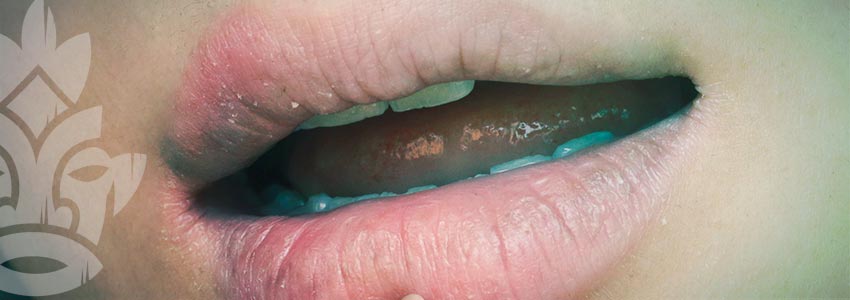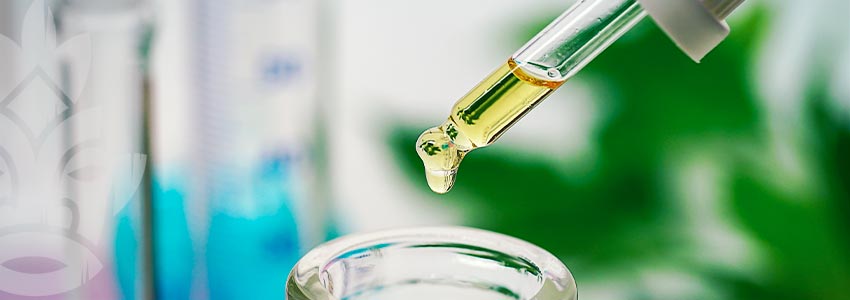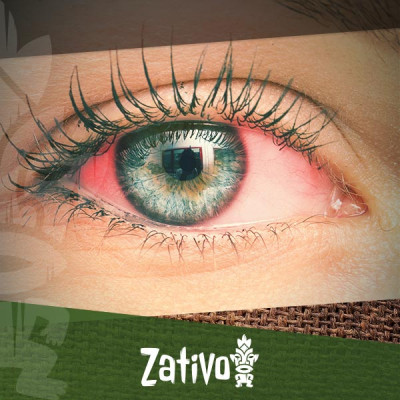Don't have an account?
Register NowYou have to add to cart at least 5 bottles or any program to make checkout.
- BlogThe Side Effects Of THC
The Side Effects Of THC
Published: February 20th, 2022
Categories:
Cannabis Info
Smoking weed produces a very wide range of responses, both physical and mental. THC is able to interact with receptors found throughout the body, and as such affects many different regions and processes.
Here we look at some of the most common side effects of THC, and ask, what actually causes them, and is there anything you can do to mitigate them?
What Is THC and How Does It Work?
Delta-9-tetrahydrocannabinol—or THC—is the most abundant cannabinoid found in the cannabis plant. It also happens to be the one responsible for the powerful high. Produced in the plant’s trichomes (glands on the flowers and sugar leaves), its natural functions are not totally known. It’s thought, though, that THC fulfils several roles, from deterring predators to protecting the cannabis plant from sun.
But how does this microscopic compound get us humans high? It’s all to do with the endocannabinoid system (ECS). The ECS is a network of channels, receptors, neurotransmitters, and enzymes throughout the body that are used for signalling and communication.
THC mimics one of these neurotransmitters—anandamide—and is thereby able to bind with CB1 receptors and interface with the ECS. Unlike anandamide, which is easily broken down by the body’s enzymes, THC is much more robust, and as a consequence can cause impressive highs affecting both the mind and body.
The Possible Side Effects of THC
When we consume THC recreationally, there’s usually one desired effect: the high. Although, pinpointing exactly what the high is, is very difficult. Rather, it is a combination of different effects that come together to produce feelings of euphoria, pleasure, and an alternate reality.
Anyone who’s smoked weed, though, will know that you don’t only get a beautiful high; there are many side effects associated with THC, some of which are funny or a light nuisance, and others we could probably do without.
In fact, for some, the side effects can be so unpleasant that smoking cannabis becomes untenable. For most, however, side effects remain in the realm of a nuisance.
Red Eyes
Perhaps the biggest giveaway that someone has smoked: red eyes! Red eyes is a classic side effect, and can be annoying when you interact with people whom you’d rather not know you’re stoned. But why does it happen?
THC is vasodilatory, meaning our blood vessels widen under the influence of this drug. As a consequence, the capillaries in your eyeballs widen, filling with more blood and thus causing your eyes to appear red. It’s nothing to worry about, and they’ll constrict again once the THC wears off.
If it’s a problem, and you need your eyes to look normal, certain eye drops can help return them to their usual, whiter selves.
The Munchies

The munchies, though perhaps the most well-known and well-loved side effect of THC, remains somewhat of a mystery.
There are several theories surrounding why THC causes us to want to consume almost infinite amounts of food, but none are proven. A 2015 study suggests that THC actually reverses the function of a certain region of the brain.¹ Hypothalamic pro-opiomelanocortin (POMC) neurons are thought to tell us that we’re full, that it’s time to stop eating. So what’s going on?
THC was observed to increase activity in this region of the brain. This went against everything the researchers expected, as surely this would decrease hunger? Exactly what’s going on is unclear, but the researchers speculate that THC both activates and reverses the function of the POMC, somehow increasing appetite. More research needs to be done, though, as this mechanism has not been observed elsewhere.
Another theory posits that THC’s activation of the CB1 receptor increases our receptivity to aromas, thereby making food more appealing to us.² The smell of food is known to make us hungry; this is why certain food chains supposedly pump out delicious fragrances—to tempt us in!
Lethargy
Once again, THC’s lethargic effects are not properly understood. In fact, it’s suspected that there are several factors that lead to the sensations of lethargy and sleepiness associated with smoking weed.
In the short term, THC is thought to cause sleepiness in higher doses. Combined with the effects of terpenes—other active compounds within the cannabis plant—these feelings can become amplified. It’s been noted that myrcene, a common terpene, increases the speed at which THC can cross the blood–brain barrier, potentially amplifying its effects and increasing feelings of sleepiness.³
In the longer term, deeper mechanisms are thought to be at work. Long-term THC consumption is thought to desensitise dopamine receptors, essentially decreasing the amount of dopamine available to us.⁴ Dopamine increases feelings of motivation and energy. It's therefore speculated that by desensitising dopamine receptors, over time people will become less motivated and more lethargic. The good news is that a break in THC use will restore these receptors to their natural receptivity.
Cotton Mouth

Dry mouth, technically known as xerostomia, can range from a nuisance to borderline distressing. And the worst thing is, downing a pint of water won’t help.
It all comes down, once again, to the ECS. CB receptors can be found in the mouth, including on the salivary glands. When THC binds to these, it seems to repress saliva production, thereby causing a dry mouth.
So, what can you do? As it’s not caused by general dehydration, drinking a lot of water won’t solve your cotton mouth. But regularly sipping water right from the beginning of the high should alleviate much of the dryness.
Likewise, the mouth produces more saliva when it senses the presence of food. So chewing on some gum or sucking sweets will get those glands active again. If you can choose sugar-free ones, this will be even better as sugar is known to dehydrate.
Altered Perception
Of course, the quest for altered perception tends to be the reason we smoke weed in the first place. But altered perception is not always pleasant.
As well as making us laugh and bringing on feelings of pleasure, THC can also trigger negative emotions. Most commonly, these are anxiety and paranoia. They can also present physical symptoms too. Sweaty palms, a racing heart—these work to exacerbate feelings of discomfort.
If you find you don’t feel great when you smoke, the best thing to do is stop. Don’t think that by smoking more you can break through the negativity and find a place of calm. Maybe it’s the strain you’re smoking, maybe you have a lot on your mind, or maybe weed doesn’t suit you. Figuring this out is essential to using cannabis in a healthy way.
Drinking water, going for a walk, using CBD: these are all potential ways to alleviate feelings of discomfort while you’re high. Put down the bong for the night and indulge in refreshing, comforting activities, and hopefully you’ll feel good again soon.
THC: A Strange Compound

Cannabis, and especially THC, is an unusual drug. Not fitting into the usual categories: stimulant, hallucinogen, depressant, dissociative, etc., it takes bits from each to create a unique and well-loved high.
Due to the prevalence of the ECS throughout most of the brain and body, THC is able to affect almost every part of us. This explains the wide array of effects and side effects it can produce. So, knowing how deep it goes, go steady and listen to your body. It tends to know what’s best!






